Dive into the vibrant world of Florence Solis as she shares the inspiration, process, and powerful messages behind her art. In this interview, she discusses everything from evoking a sense of beautiful unease to reconnecting with her Filipino heritage and the vital role art plays in cultural preservation.
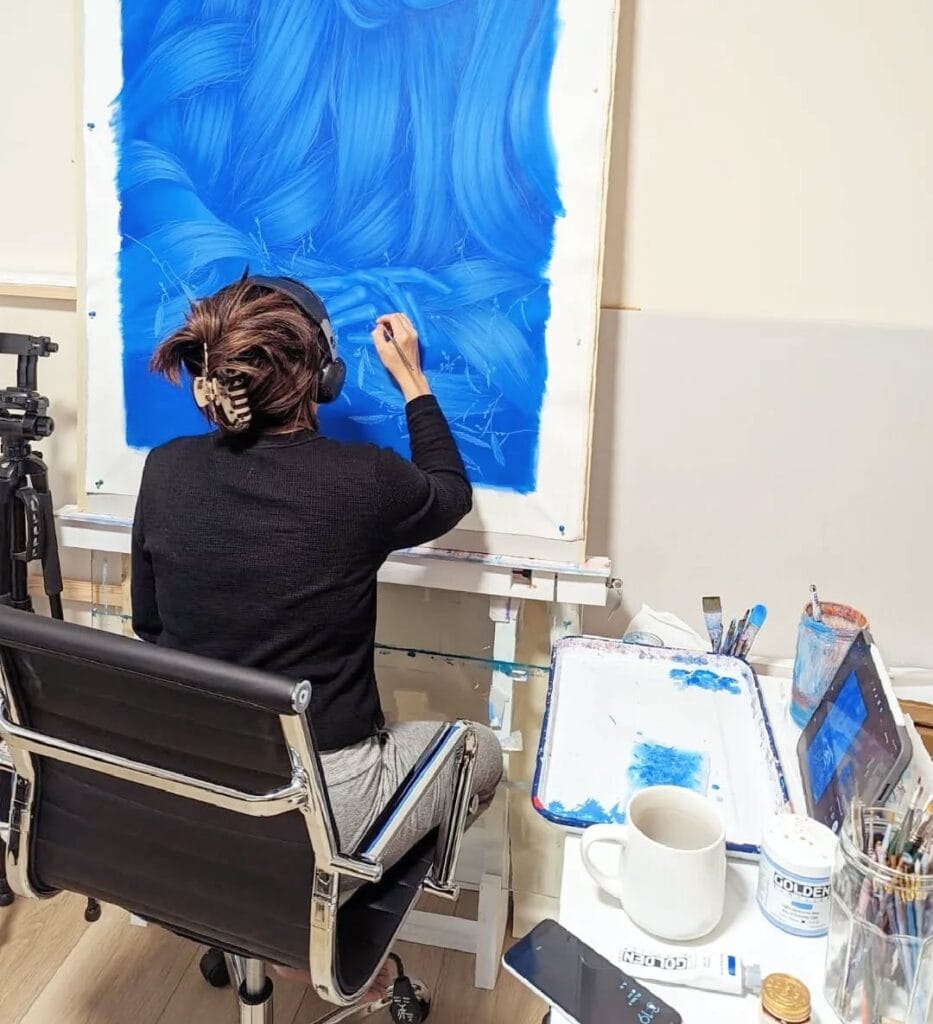
What main message or emotion do you hope viewers take away from looking at your artwork?
Honestly, I like work that gives me an uneasy feeling but still find beautiful. I think that uneasiness sparks curiosity and eventually (hopefully) more introspection on the work's background.
I also like the element of surprise when I look at work. Something unexpected and the focus on tiny details. Even if I don't know the artist or where they are coming from, these things help in opening up a discussion based on the work.
This is what I hope viewers feel or take away from my work.
Could you describe your creative process, from the initial idea to the finished canvas? Are there any specific rituals or key steps you follow?
All my current pieces start as a thumbnail sketch. Whenever an idea or imagery pops up in my head, I have to draw it quickly before I forget. Once I start on a new piece, series or prepare for a show, I go through those thumbnail sketches and try to decipher their meaning. I tend to ask myself why I thought of those images and how it reflects my current life or situation. From there on, I pick the ones that I think reflect more of me now as a person. For example, the Makahiya series and the veiled figures in my current work speaks a lot about my experience with motherhood and womanhood as a first-time mom. I find that this step is the hardest in the process.
The thumbnail sketches then become tighter pencil or digital sketches and then on to the final canvas paintings or mixed media pieces. I enjoy this part the most because the concept and idea has usually been resolved and the physical act of painting is the most calming part for me.
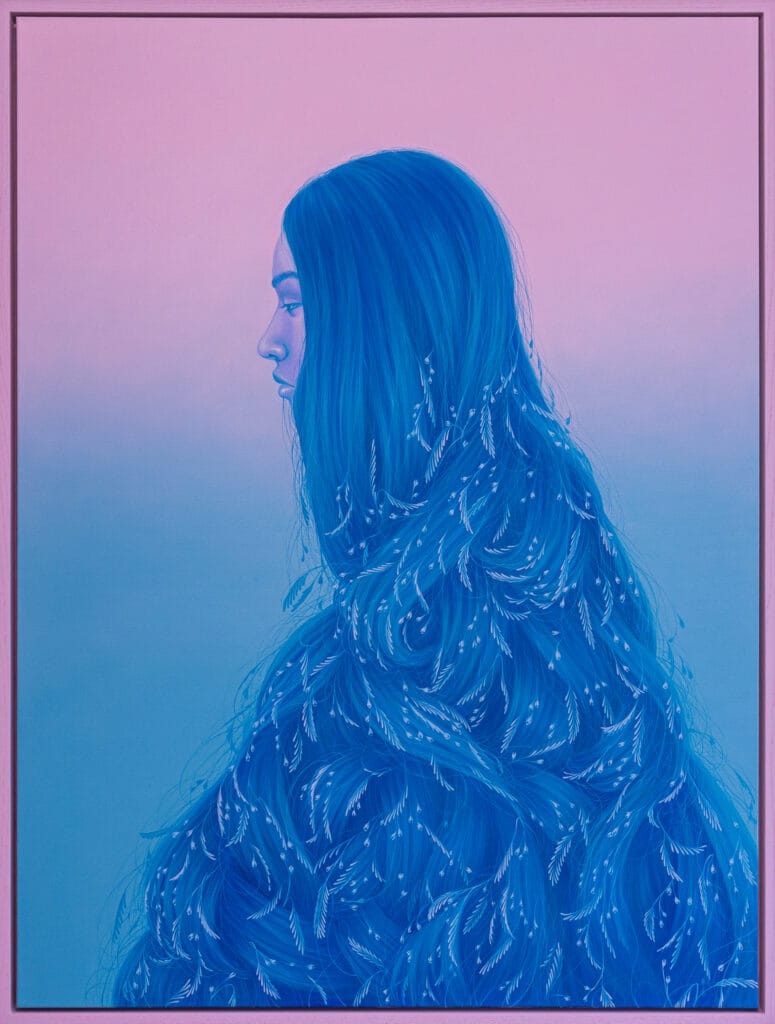
You have exhibited in several countries (Canada, U.S.A., China). Is there a difference in how your work is received or in the discussions you've had with audiences in these different cultural contexts?
Due to the current political and cultural climate in the U.S., there has been a noticeable increase in support for and interest in work by people of colour. There is an ongoing, intentional effort to amplify the voices and experiences of minority groups. My first exhibition in Chicago—Expo Chicago 2025—was a strong example of this shift. I was told that, especially in today's context of cultural "whitewashing," it is more important than ever to highlight the work of women and artists of colour.
My experience in Canada as an artist has allowed me to connect with many fellow Filipino-Canadian artists. There is a strong sense of camaraderie and support which has encouraged me to continue exploring my Filipino heritage in my work.
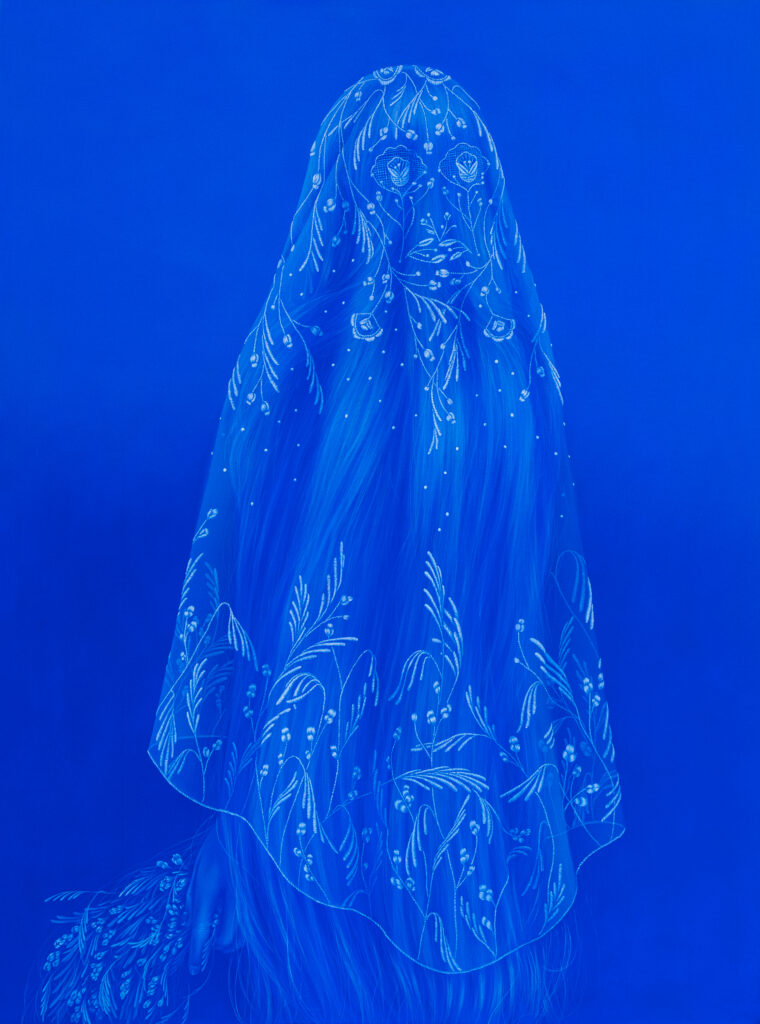
You immigrated to Canada in 2001 from the Philippines and you mention using your art to reconnect with your heritage. How do you incorporate this into your work?
Truthfully, growing up as a Filipino immigrant in Canada came with a lot of shame—something I now recognize as internalized and rooted in a colonial mentality. As both a mother and an artist, I’ve come to understand how vital it is to accept who I am and to celebrate my heritage.
I incorporate this into my work by drawing from Filipino folklore, personal memories, and colonial history. I often reference figures from the stories I grew up with—like the "white lady," a veiled ghostly figure common in Filipino horror tales. In my piece Sirena, for example, I depict a mermaid whose face is covered with a veil, reminiscent of clothing passed down from the Spanish colonial era, and adorned with jewels resembling a rosary. These symbols reflect the layers of concealment and control imposed by religion and colonial influence.
Through these visual elements, I ask questions about identity, fear, and cultural memory. Why were these figures present in our childhood stories? Why are they often portrayed as something to fear? By exploring these narratives in my work, I’m not only reconnecting with my heritage, but also reclaiming and reframing it from my perspective as part of the diaspora.
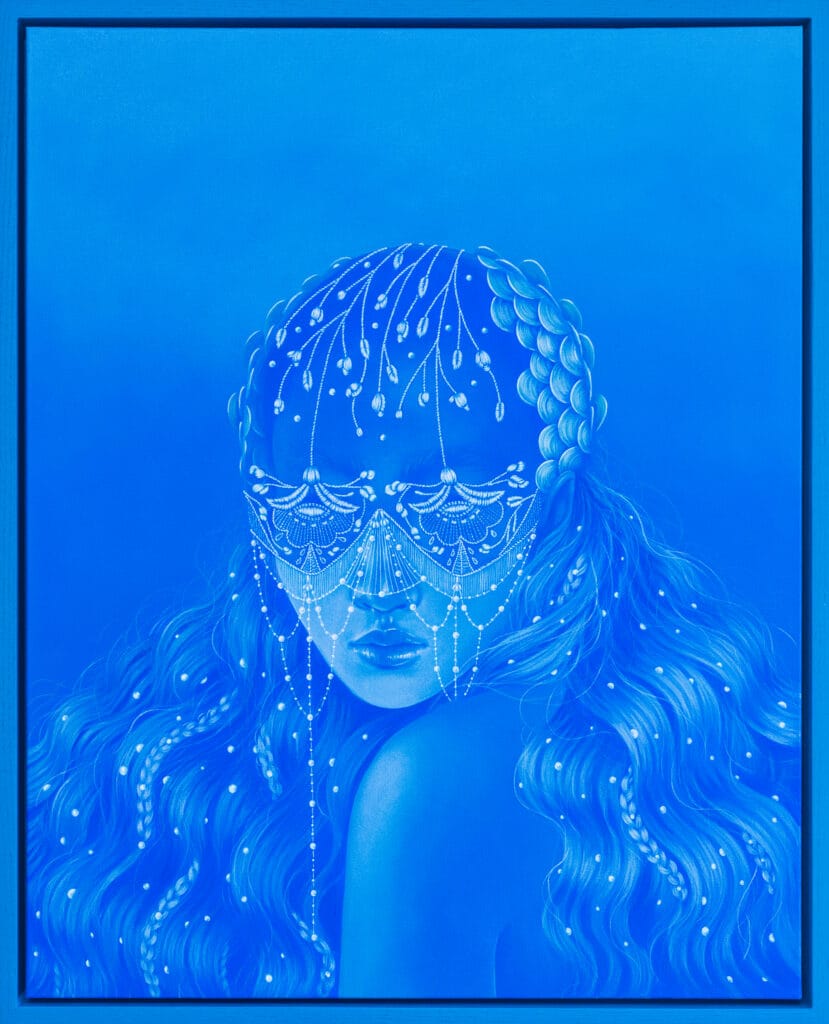
In your opinion, what role does art play in the preservation and transmission of cultural memory, especially for diasporic communities?
Art plays a vital role in preserving culture, especially within diasporic communities. Each generation carries its own stories and experiences, and naturally, each will find unique ways of expressing them. That’s why art must remain constant and visible across generations—it’s a powerful tool for cultural continuity.
Our stories are best told through our own voices. Within the Filipino community, there’s often a shared sense of regret—especially among children of immigrants—about not learning or eventually forgetting their mother tongue. In many ways, art becomes a voice for those longing to reconnect, even in small ways, with their roots. It allows for preservation, reflection, and the possibility of reclaiming what might feel lost.
Are there any specific artists, local or international, who have particularly inspired or influenced you?
Marigold Santos inspired me to make my Filipino heritage visible in my work even when I thought I didn't need to. I didn't know that it was something I was missing and reflected so much on my own journey as an individual and artist.
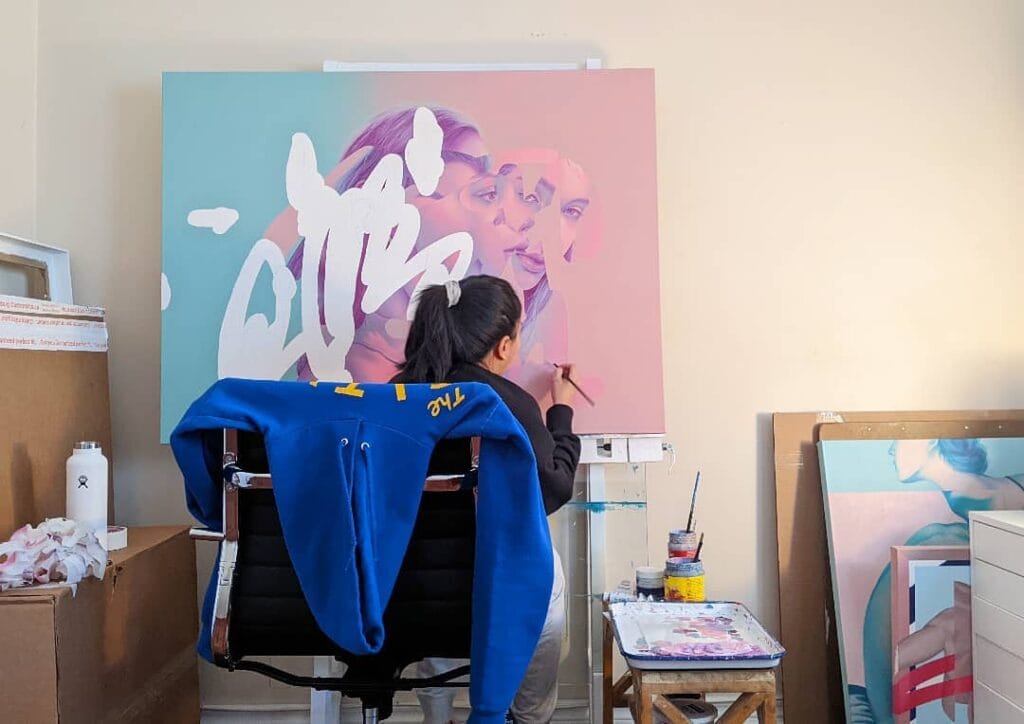
If you could offer one piece of advice to a young, self-taught artist starting their journey, what would it be?
I would focus on your message and how your experiences could connect with viewers. I believe that you could always learn to craft your skills and techniques but the message will always push the work forward, especially in a world of technological advancement in producing art.
Do you have an exhibition coming up where we can see your artworks?
Yes, I am part of a few ongoing group shows: The Mission Projects pop-up at Mcclain Gallery in Houston, TX, Celestial II at Arch Enemy Arts in Philadelphia (October) and Aqua Art Miami with Arch Enemy Arts (November) again.
My next solo show will be next year (May 2026) with The Mission Projects in Chicago, IL.
To learn and see more of Florence Solis work, visit her website and follow her on Instagram.

Do you need affordable floating frames for your artworks? The Kolekin frames are the solution!
- Easy assembly at home
- Affordable (but with that gallery look!)
- Free shipping over $50

